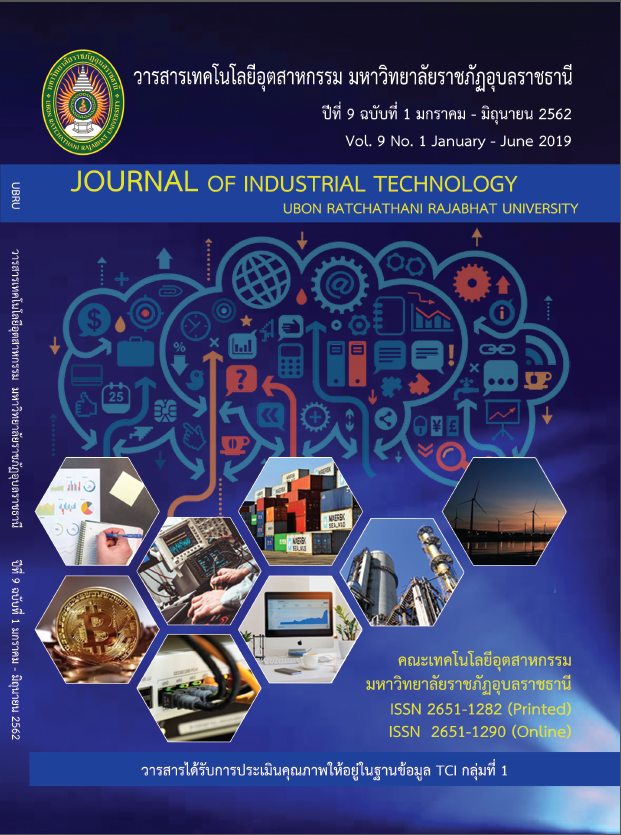Inventory model for ordering two raw materials from a single source of coffee shop : case study
Main Article Content
Abstract
This research aimed to formulate the inventory model for ordering two materials from a single source, which were condensed milk and evaporated milk. The inventory model was utilized to find the economical ordering quantity, ordering period, appropriate ordering frequency, re-order point and safety stock. The results indicated that there was no statistically significant difference for the average total inventory cost of condensed milk and evaporated milk. However, the proposed inventory model reduced the current average total inventory cost by 47.82% and 48.38%, respectively. In addition, there was no statistically significant difference for the current and the purposed average inventory quantity of condensed milk. However, the proposed inventory model reduced the current average total inventory quantity of condensed milk by 31.31%. For evaporated milk, there was statistically significant difference for the current and the purposed average inventory quantity. The purposed inventory model reduced the current average total inventory quantity of evaporated milk by 64.72%.
Article Details

This work is licensed under a Creative Commons Attribution-NonCommercial-NoDerivatives 4.0 International License.
Articles published in Journal of Industrial Technology Ubon Ratchathani Rajabhat University both hard copy and electronically are belonged to the Journal.
References
[2] Nuttachit. Booming of coffee shop market : Kasikorn bank open credit for coffee shop owner. [Internet]. 2017 [cited 2017 September 1] available from : http://marketeer.co.th/ archives/117436 (in Thai)
[3] Vongravag N, Thongsanit K. Optimal Fabric Inventory Management for Textile Industry. IE Network Conference 2012; 2012 October 17-19; Methawalai Hotel; Phetchaburi; 2012.
P.414-22. (in Thai)
[4] Yukseltan E, Yucekaya A. (2017). Forecasting electricity demand for Turkey: Modeling periodic variations and demand segregation. Applied Energy. 2017; 193; 287–96.
[5] Pumkesorn P, Uraichot P. The Study of forecasting Models and Appropriate Inventory Management Case Study: Caryon Packaging. Thai Industrial Engineering Network Journal. 2015; 1(1): 14-22. (in Thai)
[6] Klumleantong M, Khokhajaikiat P. Inventory modeling for spa business: a case study of phattaravaee zenity beauty and spa. KKU Engineering Journal. 2012; 40(1): 57-66. (in Thai)
[7] Khonton K, Khokhajaikiat P. A comparison of forecastind medthods for consumption of viscous substances in power beverage industry: A case study. 2013; 19(6): 819-33. (in Thai)
[8] Kaewwinud N, Khokhajaikiat P, Khonton K. Inventory management model of beverage in grocery Shop: A case study. IE Network Conference 2017; 2017 July 12-15; The Empress Chiang Mai Hotel: Chiang Mai University Press; 2017. p. 1187-94. (in Thai)
[9] Walpole RE, Myers RH, Myers SL, Ye K. Probability and statistics for engineers and scientists. New York: Macmillan; 1993 Jan.
[10] Landau S. A handbook of statistical analyses using SPSS. CRC; 2004.
[11] Chang Y. and Sullivan R. QSB+ (Quantitative Systems for Business Plus). USA: Prentice-Hall International; 1989.
[12] Coolidge F. Statistics: A gentle introduction. 2nd. Thousand Oaks, California: Sage Publications; 2006.

